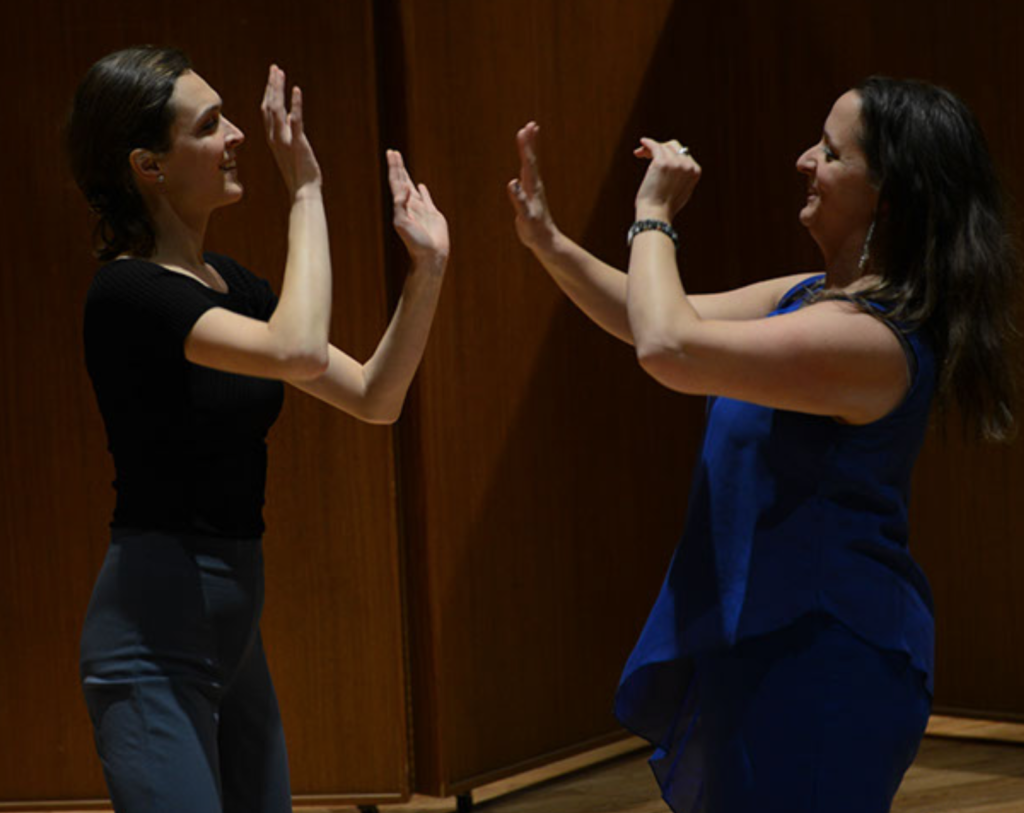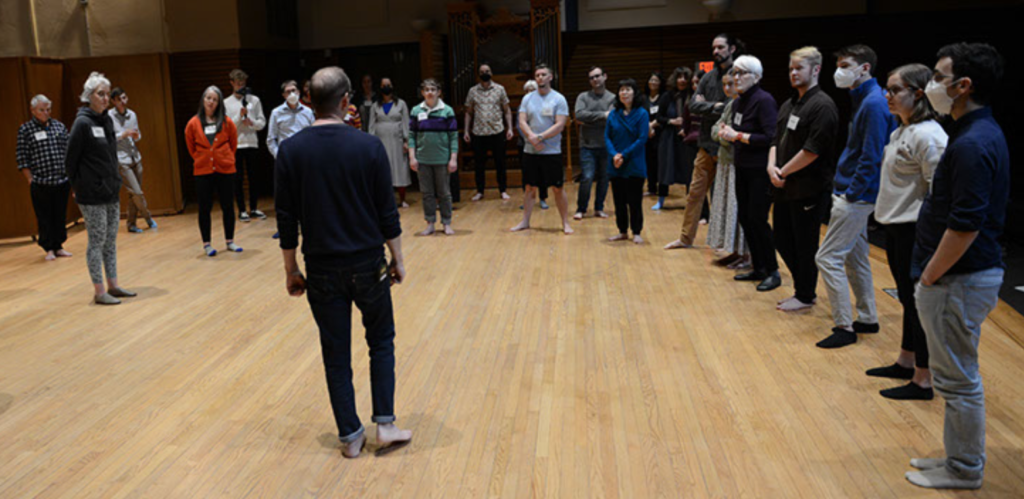
Eurhythmics As a Lifelong Discipline
Becoming an Opera Singer
When I had to pick a concentration in my high school conservatory, I picked opera because I couldn’t dance. Selection day was held in the small former chapel, with dozens of other first year applicants dancing and warming up on the hard, gray carpet; flipping their long hair and box stepping. I didn’t know where I fit into the program, but I knew I sang every day and could sing well (and loudly). At the selection event, I sidled up to the butch choir teacher I trusted to ask what the real difference was between the classical vocal music and musical theater concentrations. She said folks in musical theater had to dance and classical singers didn’t.
At 14, I had about the same amount of experience in both vocal music (in church choirs, in my middle school rock band) and musical theater (in community theater productions). I had good body control, since I had been studying Shito-Ryu Karate Do since I was six. But that control extended exclusively to ways to punch people, which – tragically – there are very opportunities for in most musicals. Looking around that chapel, I didn’t think I could get my body to do what all of those dancers’ bodies were doing.
So, I started singing opera. I took private lessons and sang in chamber choirs and, when the time came, I auditioned for colleges. Ms. Susan Nace had been right – it was a rare day in high school that anyone asked me to dance, and since I was tall and butch and a mezzo, I mostly just needed to know enough to waltz the occasional lithsome blond soprano around while singing a pants role at a recital. I still moved my body: swaying and clapping, marching and gesturing when I was off singing on my own. But the music didn’t really fit in between my bones the way it seemed to for the dancers in my program.
Enter: Carnegie Mellon University
I didn’t get into any of the college programs I auditioned for as an opera major, but I picked the selective Humanities Scholars Program Carnegie Mellon University over Smith College because I liked how geeky CMU was, and I could see their College of Fine Arts’ vocal performance minor might let me perform more than the once-every-five-years opera cycle that Smith’s program seemed to be running on.

Discovering Eurhythmics as an Undergrad
A few years into CMU’s program, I ended up in Dr. Stephen Neely’s Dalcroze eurhythmics class. It was incredibly hard for me. 8:30am on a snowy college campus in Pittsburgh, PA is a tough time to ask anyone to connect to their breath, and I just couldn’t seem to get my body and my brain on the same page. I clapped quarter notes when I meant to clap triplets, and stepped triplets when I was supposed to be stepping straight sixteenth notes. In preparation for writing this piece, I found one of my old worksheets and the fugue of anxiety and inadequacy it brought me at 20 washed over me again. Every morning class I felt like I was the tall, awkward-armed mezzo surrounded by those dancerly sopranos again.
I ended up dropping the class, coming back a few semesters later in a better place (and at a better time of day). I had gotten a bit of practice conducting and taken some numbers-heavy computer science classes, so the math of eurythmics just seemed to fit into my brain and body better than it had before. I graduated with a Vocal Performance (Opera) minor after taking classes like French Repertoire and Literature, Harmony, and Solfège (fixed Do all the way!); I also got to sing principal roles in summer festivals and was the only minor invited to sing in that year’s production of Dialogues of the Carmelites (where the conductor added in fight choreography when she heard I’d gotten my blackbelt – so I did get to use my martial skills in performance). I sang in a semi-professional choir in Washington, D.C. after graduation while doing political and communications work related to my major, but since then, most of my still-daily singing has been with friends, in churches, and, memorably, during a U.S. State Department-supported delegation trip to Nigeria, where I was team teaching middle schoolers STEM games and used Woody Guthrie songs to break-up the different phrases of the lesson.
How I Use Dalcroze Today
A decade later, it’s not Harmony I or Solfège or French Rep that I rely on every time I open up the church bulletin at my small Episcopal church; it’s Dalcroze eurhythmics. I use the skills I learned in my two tries at eurhythmics nearly every time I sightread, which is every Sunday where I’m still one of the louder voices. I glance at the key signature and put the meter in my body. Eurhythmics means I know what a triplet should feel like; I know where the beat should land not only in my voice, but my breath.
I still don’t dance as much as I sing. But since I was 14 and trying to figure out where I fit into the musical universe, I’ve learned there are other ways to put the music in my body, ways that don’t require me to be lithesome or know how to box step on command. And more importantly, I’ve learned how to hone the natural ways I’ve always used my body in music – swaying and rocking, tapping and snapping, nodding and clapping – into reliable reference structures that help me as a singer and musical leader. I’ve come to rely on my body in ways I could not have imagined at 14 or 20, and Dalcroze Eurhythmics was a big part of why.
The DSA reflects the richness and diversity of the American community of practice, which includes Dalcroze-inspired teachers & artists, musicians & dancers, and actors & other professionals who have adapted the Dalcroze approach to their individual work. Let us know what Dalcroze means to you. Not a member? Join instantly online.
1 Comments